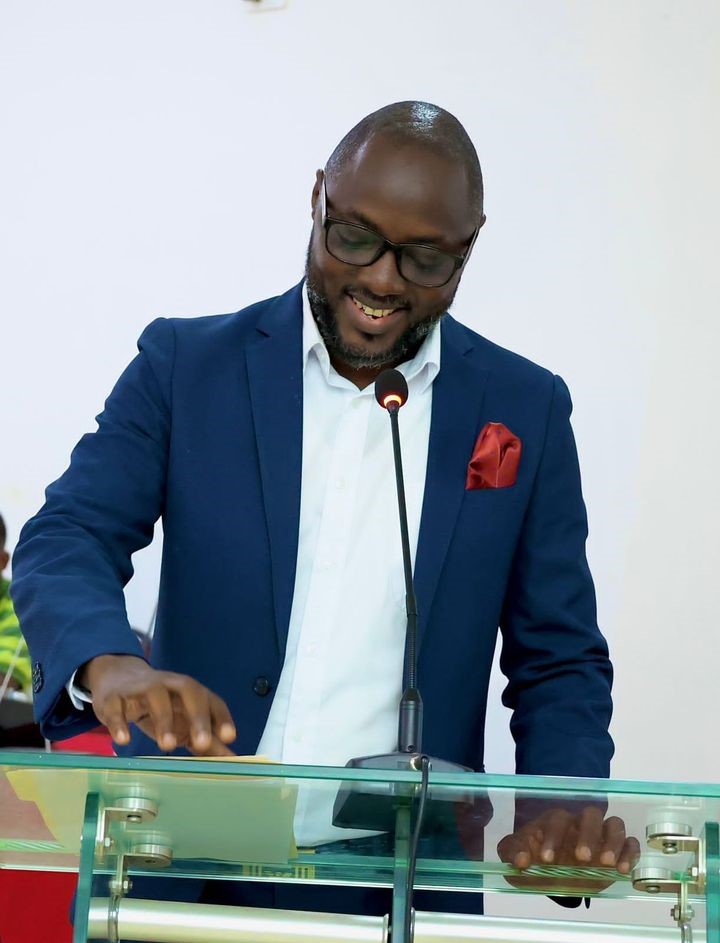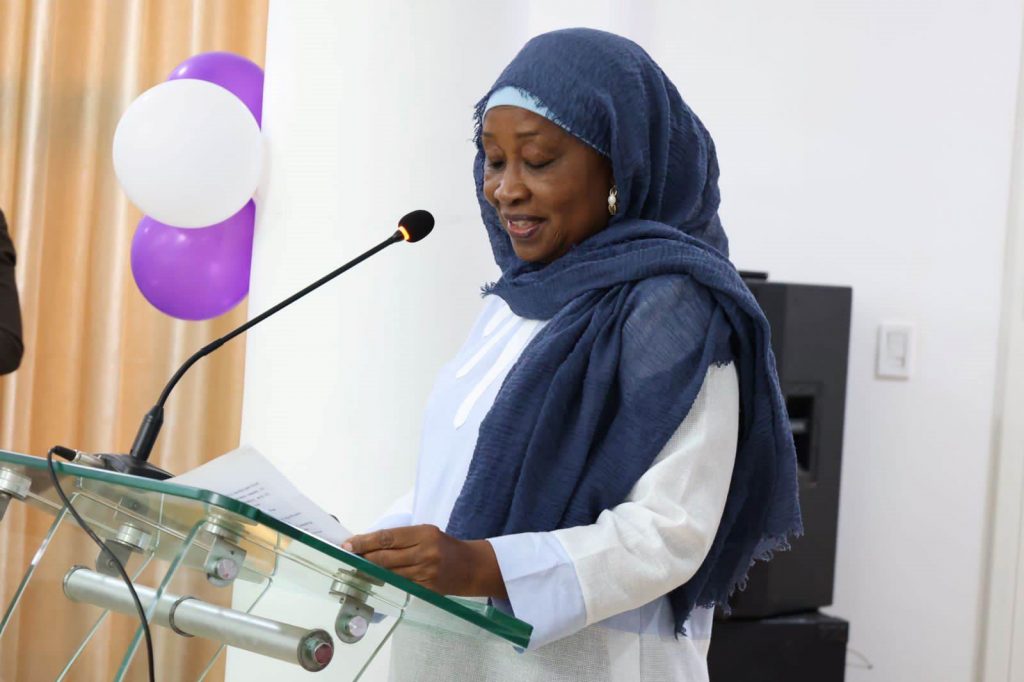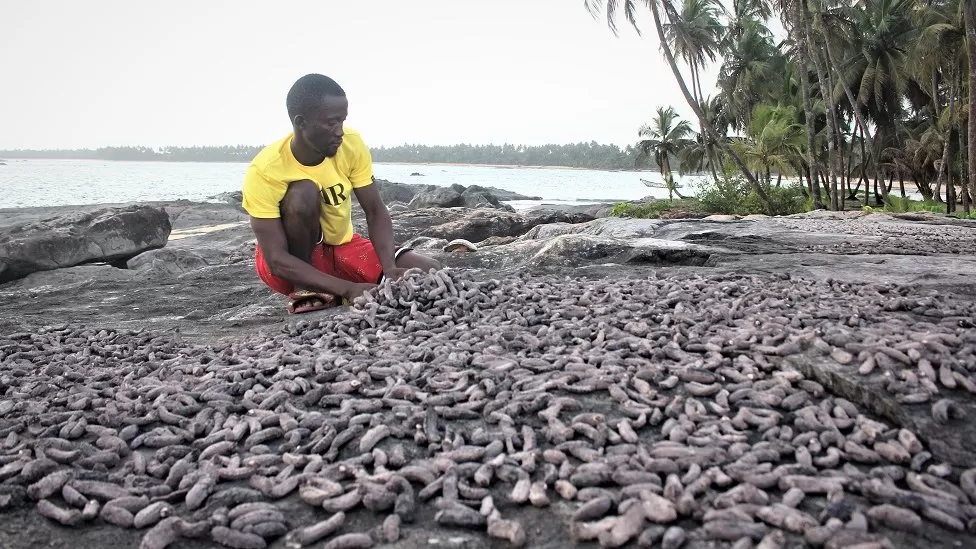Following reports on the fishing of Sea Cucumbers off the coast of Liberia, the Food and Agriculture Organization (FAO) of the United Nations and the National Fisheries and Aquaculture Authority (NaFAA) have concluded a validation workshop on the sustainable management of what is known as sea cucumber fisheries in Liberia.
NaFAA Deputy Director General for Administration, Mr. Augustine M. Manoballah represented the fisheries management body at the event held in Monrovia from April 11-12, 2023.
Speaking during the validation exercise, Mr. Manoballah committed his institution’s readiness to implement the plan for the sustainability of sea cucumber fisheries.
“Liberia welcomes this development. NaFAA stands ready to fully implement this management plan to ensure sustainable harvest, enable divers with the necessary tools to facilitate timely reporting, conduct additional training for fisheries enumerators and inspectors, and monitor & control possible encroachment from neighboring coastal countries”

Manoballah said implementing the plan would serve as a source of revenue for the Liberian government and create job opportunities.
“This is the first time that we are having a species-specific management plan in Liberia, and we want to assure our partners that this will not be the last. Implementing the plan will serve as a source of revenue for the government and will create job opportunities for Liberians”.
According to him, the species was discovered in River Cess with six Sierra Leonian Hookah divers harvesting.
“This was discovered from the assessment that there were six Sierra Leonean and one Chinese fishing for the species in a remote community in River Cess almost one hour walk from Cestos; Manoballah noted, adding, “The assessment team understood that these divers (Sierra Leoneans) were diving for the species, processing it through boiling and sun drying, and selling to the Chinese who then exported to Asia. NaFAA did not benefit whatsoever in License and export fees”.
Also making remarks was FAO country representative, Mariatou Njie. Madam Njie said Sea Cucumber can be a vital resource for coastal communities.
“Sea cucumbers can be a vital resource for coastal livelihoods. The products derived from these fisheries are readily accessible straightforward to process, non-perishable, and their trade offers significant cash incomes (through foreign exchange) directly to rural coastal communities”.
Despite this fishery’s prospect, the FAO country representative also highlighted the associated risk when it’s exploited.
“However, sea cucumbers can become over-exploited, leading to extinction levels that may require many years for stocks to become healthy enough to replenish themselves regularly to support fishing once again”.
In April 2021, the Liberian government through NaFAA signed an agreement with the United Nations Food and Agriculture Organization (FAO) to provide technical support to conduct an assessment along the coast of Liberia to create a sea cucumber management plan. The ongoing workshop intends to finalize and validate the plan.
The National Fisheries and Aquaculture Authority, Liberia Maritime Authority, World Bank, European Union, Liberia Artisanal Fishermen Association (LAFA), and the Environmental Justice Foundation (EJF) are among the institutions participating in the workshop.


Sea cucumbers are echinoderms from the class Holothuroidea. They are animals that live in all the world’s oceans. They are found mostly in shallow water. But some can be found in the deep ocean. They are called sea cucumbers because of their cylindrical shape and the presence of bumps all over their bodies.
A sea cucumber is an invertebrate which means it does not have a backbone. The animals range from 0.75 inches to 6.5 feet (2 to 200 centimeters) long and from 0.4 to 8 inches (1 to 20 centimeters) thick. Most species have five rows of tube feet. (Tube feet are like little legs.) Sea cucumbers usually move very slowly. Some deep-water species can swim.
A sea cucumber’s mouth is surrounded by 10 or more tentacles that are used for eating or burrowing. They feed on algae or nutrient-rich mud. The anal opening is used for both breathing and discharging waste. Many sea cucumbers can expel their internal organs through the anus and grow new ones. No one knows for certain why this happens.
Sea cucumbers can reproduce in two ways. One way is for the female to release millions of eggs into the ocean. The eggs are then fertilized by the male’s sex cells. The fertilized eggs can develop on their own. The other way is through asexual reproduction. This means a sea cucumber can divide in two to create its offspring.
Sea cucumbers protect themselves in different ways. Some expel a sticky substance that can trap or confuse an enemy. Others produce a toxin that can kill small animals.
Sea cucumbers are harvested to produce many products, including medicines, shampoo, and toothpaste. In China, people enjoy eating sea cucumbers. They dry or boil the outer wall of the creature to make bêche-de-mer. The demand for bêche-de-mer has led to a great reduction in sea cucumber populations across the world
Liberian-born Emmanuel Orlind Cooper is an accomplished multimedia journalist with extensive experience covering news and stories on a variety of media platforms. Orlind's work frequently demonstrates his profound grasp of the region and its complexity, given his Liberian heritage.
Now residing in Woodbridge, Virginia, he keeps connecting with readers across continents with his perceptive journalism and sharing his viewpoint. He is well-respected in the sector because of his unwavering commitment to honesty and morality, which sets him apart in the field.
Orlind's work is more than simply his job; it's a dedication to giving voice to the voiceless, illuminating unsung tales, and advancing the worldwide conversation on important concerns. His goal as a journalist is to use the media's power to change the world, not just to disseminate information. He is a key player in modern journalism because of the inspiration, education, and engagement that his work consistently provides.


